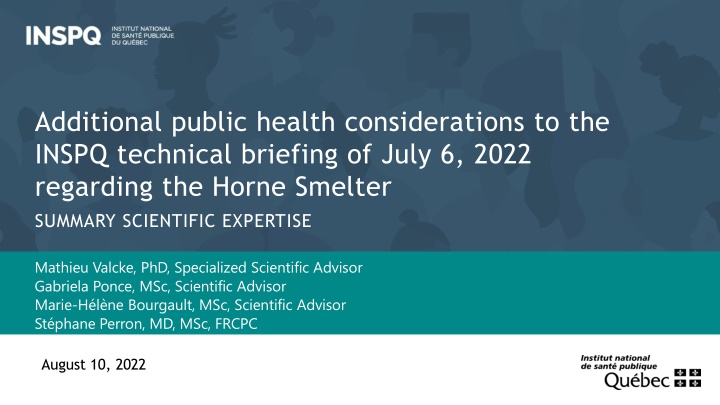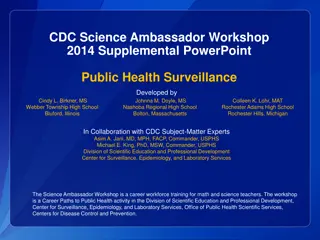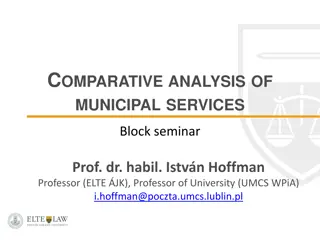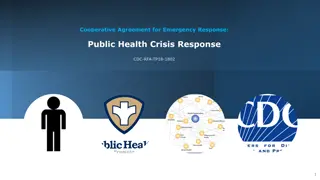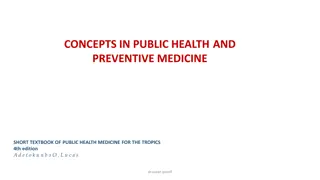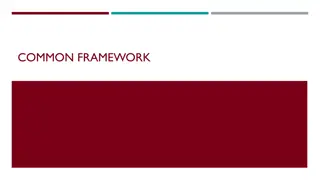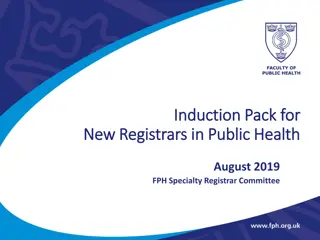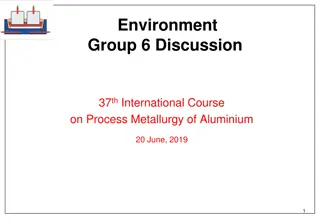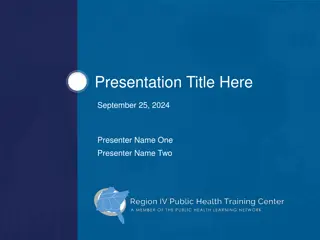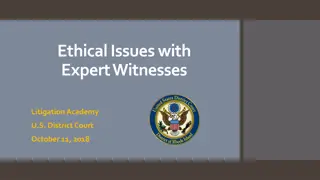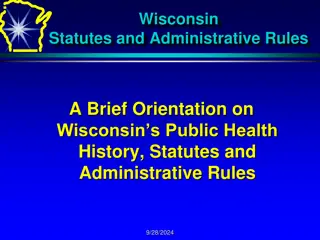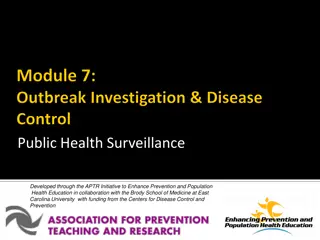Additional Public Health Considerations on Horne Smelter: Expert Analysis
The presentation addresses public health concerns post the publication of the Carcinogenic Risk Assessment in Rouyn-Noranda, focusing on arsenic, lead, and cadmium exposure risks with proposed reference values. It delves into non-carcinogenic effects, risk projections, and methodology used for evaluation, emphasizing the need for protective measures and ongoing analysis.
Download Presentation

Please find below an Image/Link to download the presentation.
The content on the website is provided AS IS for your information and personal use only. It may not be sold, licensed, or shared on other websites without obtaining consent from the author.If you encounter any issues during the download, it is possible that the publisher has removed the file from their server.
You are allowed to download the files provided on this website for personal or commercial use, subject to the condition that they are used lawfully. All files are the property of their respective owners.
The content on the website is provided AS IS for your information and personal use only. It may not be sold, licensed, or shared on other websites without obtaining consent from the author.
E N D
Presentation Transcript
Additional public health considerations to the INSPQ technical briefing of July 6, 2022 regarding the Horne Smelter SUMMARY SCIENTIFIC EXPERTISE Mathieu Valcke, PhD, Specialized Scientific Advisor Gabriela Ponce, MSc, Scientific Advisor Marie-H l ne Bourgault, MSc, Scientific Advisor St phane Perron, MD, MSc, FRCPC August 10, 2022
Preamble This presentation was produced on short notice at the request of public health authorities following the publication of the Carcinogenic Risk Assessment of Ambient Air Arsenic and Cadmium concentrations in the city of Rouyn- Noranda. While the authors of the study are confident in its overall findings, further analysis might possibly reveal minor nuances or inaccuracies. Indeed, due to time constraints, the content has not yet been peer reviewed at the time of presentation. A publication is currently in preparation.
Initial questions related to the public health authority mandate Until the 3 ng/m3 standard for arsenic is reached, what reference values need to be met to prevent the potential non-carcinogenic effects on fetal and newborn development in the current context? What are the risks of carcinogenic and non- carcinogenic effects associated with these benchmarks?
Topics covered Proposed ambient air reference values for arsenic (As), lead (Pb) and cadmium (Cd) needed to protect the population from non- carcinogenic effects. Carcinogenic risk projections for ambient air As, Cd, and nickel (Ni) concentrations in the Notre-Dame district (QND). An integrated perspective on the risk related to the targeted air contaminants. Current risk ofnon-carcinogenic effects for As, Pb and Cd concentrations in soil (QND and the rest of Rouyn-Noranda). Conclusion
Methodological concepts used in the evaluation of non-carcinogenic risk Reference values with threshold: Provides an exposure value to ensure that the population is protected for a given effect Relates to the effect appearing at the lowest exposures and therefore is protective against other effects Daily or annual exposure Exposure Assessment: Ambient air concentrations Doses by soil ingestion Effect threshold Exceedance? Reference values Estimated or measured exposure vs.
Map of Notre-Dame district sampling stations Legal station and station 8006 School Notre-Dame de Protection Station 8045 Station 8049
Proposed ambient air reference values for non-carcinogenic effects
Arsenic: proposed annual and daily reference values Annual average: 15 ng/m3(Cal EPA, 2014): - Protective value for IQ decline - Based on a study of ingestion of drinking water by 10 year-old children in Bangladesh Daily maximum: 200 ng/m3(Cal EPA, 2014): - Protective value for developmental effects - Based on an inhalation study in mice; reduction of fetal weight
Lead: annual standard and daily reference value Compliance with the annual standard of 100 ng/m3(prevents blood lead levels associated with a variety of effects, including IQ decline) Daily maximum: 350 ng/m3(estimated value based on the 2000 WHO approach) - Protective value to prevent reaching the mandatory blood lead reporting threshold of 50 g/l
Cadmium: annual standard and daily reference value Compliance with the annual standard of 3.6 ng/m3(carcinogenic effect) Daily maximum: 30 ng/m3(ATSDR, 2012): - Protective value for non-carcinogenic respiratory effects - Based on an inhalation study in rats; respiratory tract inflammation
Carcinogenic risk projections in the QND for As, Cd and Ni concentrations in ambient air (various scenarios)
Lung cancer risk in the QND for various scenarios of As concentrations reduction towards the standard 15 ng/m3 3 ng/m3 Current Risk considered unacceptable: 10 in 100,000 Suggested acceptable risk for copper smelters in the United States (U.S. Federal Register): 3 in 100,000 3.3/100,000 3.3 per 100,000 12.3 2.0 per 100,000 per 100,000 Negligible risk: 1 in one million (0.1 in 100,000)
Lung cancer risk in the QND for various scenarios of As concentrations reduction towards the standard Using an average estimate of "unit risk" values by five organizations: U.S. EPA, WHO, CalEPA, Health Canada, TCEQ Assumption of the compliance with annual standards for Cd and Ni. The 70-year prospective calculation from 2023 onward shows 2 to 3.5 cases per 100,000 in 10 different sequence scenarios of projected average concentration reduction at station 8006 by 2028 (between 3 and 15 ng/m3) - As such, carcinogenic risk varies primarily with the projected annual average air concentration of As at station 8006 (2028 and beyond), and not with the 2023 2028 reduction sequence.
An integrated view of risk The results suggest that: By the time the As standard of 3 ng/m3 is reached, the annual average ambient air As concentration of 15 ng/m3 at the legal station: Protects against developmental effects on young children (a drop of 1 IQ point); effects beyond this value cannot be excluded. Presumably also prevents the exceedance of the daily 200 ng/m3reference value for protecting fetal development Corresponds to a carcinogenic risk of slightly more than 3 cases per 100,000* over 70 years, for future generations * If both the standards for Cd and Ni are met.
Current risk of non-carcinogenic effects for As, Pb and Cd concentrations in soils (QND and rest of Rouyn-Noranda)
Risks of non-carcinogenic effects on young children for As, Pb and Cd concentrations in soils (considering bare soil) Contaminant (critical effect) Sector Average exceedance factor of the reference value Proportion of children aged Proportion of 6 month - 6 months 4 years with exposures above effect threshold Average 4 year olds with of the reference value Contaminant Sector (targeted exceedance factor effect) exposure greater than the effect threshold Arsenic QND Rest of Rouyn 9.7 6.8 5.4% 1.2% (-1 IQ pt.) Lead QND Rest of Rouyn QND 0.4 0.4 0.05 8.5% 7.7% 0% (-1 IQ pt. Cadmium (renal effect)Rest of Rouyn 0.05 0%
Conclusion and insights to reduce uncertainties
Conclusion This study focused on As, Pb, and Cd because of they account for the major part of the risks associated with Horne smelter emissions. Until the As standard of 3 ng/m3is reached, a concentration of 15 ng/m3or less will protect the most vulnerable individuals (including fetuses and infants) from non-carcinogenic effects, provided the following conditions are also met: - addition of a maximum 200 ng/m3daily concentration of As - compliance with annual standards for Pb, Cd and Ni - addition of maximum daily concentrations of 350 ng/m3for Pb and 30 ng/m3for Cd.
Conclusion An annual average As concentration of 15 ng/m3at station 8006 will help to reduce the risk of lung cancer for future QND generations by a factor of about 4 compared to the current situation, at a level considered acceptable in similar North American contexts. Current exposure to arsenic and lead in soils poses a risk of concern for young children. Increased efforts to decontaminate soils to current generic standards would reduce these risks. This evaluation includes uncertainties that are inherent to any risk assessment process: Exposure assessment Effects of other substances not considered in the analysis
Ways to reduce uncertainties Daily sampling to better monitor the evolution of As, Pb, Cd, and Ni ambient air concentrations over time Increased monitoring of other contaminants with carcinogenic potential: fine particles, antimony, chromium Pb, As and Cd human biomonitoring Improved access to the Horne Smelter s environmental sampling data
Acronyms As: arsenic ATSDR: Agency for Toxic Substances and Disease Registry CalEPA: California Environmental Protection Agency Cd : cadmium NPRI: National Pollutant Release Inventory Ni: nickel WHO: World Health Organization Pb : lead IQ: intelligence quotient QND : Notre-Dame district TCEQ: Texas Commission on Environmental Quality U.S. EPA: United States Environmental Protection Agency
